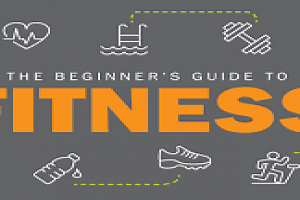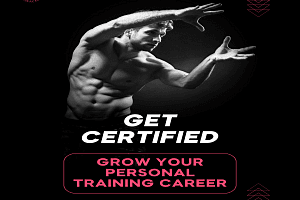A Beginner’s Guide to Working Out - by CFA

A Beginner’s Guide to Working Out - by CFA
If you are considering to start a fitness regimen, here is all you need to know about starting a routine and sticking to it!
One of the best things that you can do for yourself and others around is to exercise regularly and stay fit. In fact, you can see the difference yourself once you start exercising consistently for a few months in succession, on your over all health and mindset as well.
However, working exercise into your routine takes a lot of determination and sticking to it for a long term requires discipline. If you are considering to start a fitness regimen, here is all you need to know about starting a routine and sticking to it!
Why exercise?
Regular exercise has been shown to improve your health significantly. Its primary benefits include helping you achieve a healthy body weight and muscle mass, reducing your risk of for chronic diseases. It can also lift your mood, boost your mental health, help you sleep better and even enhance your sex life. And that’s not all as it helps you maintain good energy levels. In a nutshell, it is your mantra to happy and healthy life ahead.
Common types of exercises
- Aerobic: The core of any fitness program should include some form of continuous movement. Examples include swimming, running and dancing.
- Strength: These workouts help increase muscle power and strength. Examples include resistance training, plyometrics, weightlifting, and sprinting.
- Calisthenics: These moves are usually performed without gym equipment using large muscle groups. They are done at a medium aerobic pace. Examples include lunges, situps, pushups and pullups.
- High-intensity interval training: HIIT includes repetitions of short bursts of high-intensity exercise followed by low-intensity exercises or rest periods.
- Boot camps: These are timed-based, high-intensity circuits that combine aerobic and resistance exercises.
- Balance or stability: These are designed strengthen muscles and improve body coordination. Examples include pilates, tai chi poses and core strengthening exercises.
- Flexibility: These types of exercises help muscle recovery, maintain range of motion and prevent injuries. Examples include yoga or individual muscle-stretch movements.
The above-listed activities can be done individually or combined in a regimen. The important thing is to do what is best for you and to have fun with it.
How to get started?
- Start with aerobics to and keep yourself active all day long while having clean and nutritious diet.
- Check your health with the help of your doctor. Check your BMI and BMR in the before starting a fitness regimen.
- Now make a plan and set realistic goals. For example, if you decide to start with running and goal is to do a 5 km run then start with shorter runs. Keep increasing the distance every day and reach your goal of 5 km.
- Add newness and experiment with your workouts. Along with cardio and aerobics, make your every muscle workout throughout the week with strength training in the gym under the guidance of a certified instructor.
- Make it a habit like you brush your teeth daily, exercise shouldn’t be something that you can skip. It should be a part of your daily routine no matter what. Without consistency, no matter how hard you try in between, all your efforts would eventually fail.
A few tips for beginners
- Stay hydrated: Maintain healthy hydration levels by intaking fluids throughout the day. It helps maintaining optimal performance, especially while exercising in hot temperatures. Moreover, it helps you recover and get you ready for your next training session.
- Optimize your nutrition: Support your fitness program with a balanced diet. All food groups are necessary to sustain a healthy energy level and get the most out of your workout. Carbs are vital too as they help you fuel up before the workout session. Proteins make a major portion of your diet while you are on a fitness regimen. Do not every skip your meals while on a fitness routine and consult a good nutritionist to guide your through.
- Warm up: Always warm up before beginning your exercise. Warm up either with light weight sets of the same exercise or cardio sessions to increase the blood circulation in your body and warm up your muscles in the first place. It prevents injury and also, connects your mind to your muscles, preparing them for the coming up workout. This gives good performance and results too.
- Cool down: Cooling down is important too to get your body back to its normal state. It can reduce the chances of muscle soreness and makes your breathing pattern come back to normal state. Cool down exercises include light aerobic exercises or stretching after resistance training.
- Listen to your body: If you are not used to working out every day, be mindful of your limits. If you feel pain or discomfort while exercising, stop and rest before continuing. Pushing through the pain is not at all a good idea. It can cause injuries. Take your time to progress through your fitness program. It will help you sustain for a long term and make the most of your efforts. Working out harder and faster is not necessarily better but sustainable efforts always are good.






